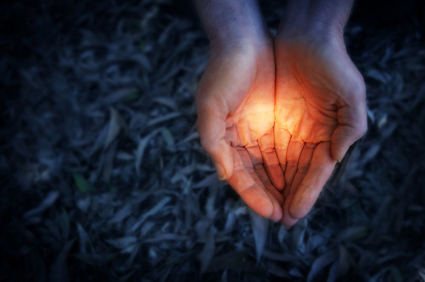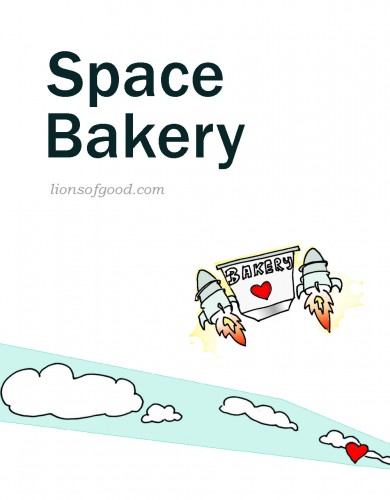
If you’re a leader of a charity organization (or any community), you might find these tips useful. Let’s jump right to them:
Use positive themes
Negative campaigns work extremely well in getting people to act. But when building a long-term relationship, people are less likely to welcome a constant negative influence into their lives.
We tend to find more fear-mongering, guilt-tripping messages from old-school organizations that have not yet embraced the social nature of the modern economy, because their models are still about churning through short-term transactions (and constantly having to find new people), as opposed to nurturing long-term relationships and growing exponentially.
Since Maya’s Hope focuses on long-term relationships, the positioning must be a positive one. Recognizing that most people may not take any action right away, a positive positioning invites them to welcome Maya’s Hope into their lives, giving us the opportunity to enrich it with positivity. Meanwhile, we get to nurture a relationship… and occasionally give people a chance to do something good.
Another benefit of a neutral-to-positive theme is: when a sincerely urgent need arises, people are more likely to appreciate it as truly an urgent need (in contrast with a negative theme where no one is sure if anything’s urgent because “everything’s urgent”… and everyone’s constantly “crying Wolf”).
Beware the Bystander Effect
Problems such as poverty and malnutrition are systemic problems that are the equilibrium of a complex system in a particular region of the world. So the danger in putting people head-to-head with such a formidable problem as “world hunger” or “child prostitution” can quickly invoke feelings of helplessness. The problem can seem so overwhelming that it becomes impossible to accept that any solution exists.
The other challenge is that when presenting a big problem to a large group of people, people are tempted to think of it as “somebody else’s problem”[1], which leads to inaction.
To counter the feeling of helplessness, Maya’s Hope always humanizes the problem and makes it real and personal by featuring individual people, faces, names and stories. For example, you must never make it about some abstract thing like “malnutrition’. Because it’s really about someone… a boy… like Mark Ramirez, a son, brother and an honor student who dreamed of becoming a doctor, but tragically passed away a week after his birthday.
It is important to transport a problem from its remote location, into people’s living rooms, bedrooms and nurseries. It is easy to ignore a problem when it “happens to someone else”, but not so easy when it happens to someone in your family, someone close to you, or when the problem threatens to infiltrate your sanctuary. You must frame all issues to be relevant to your audience, and anchored in things that are personal and close to the heart and home.
To counter the Bystander Effect, Maya’s Hope focuses on each individual’s personal motivations to “pay it forward” — leveraging a motivation to act that comes first and foremost from someone’s inner fire (fueled by love or indebtedness to someone special to them). This motivation is more powerful than just wanting to be kind toward a stranger.
Exploit the Bystander Effect to your advantage
The danger of the Bystander Effect is when people look around them for cues on how to act and, see no one taking action, then conclude that it must not be important and do nothing themselves. However, this behavior can be flipped to your advantage:
Instead of having people see other people not doing anything, we can show how other people are doing good and making a positive difference. This encourages more participation, without having to resort to unsavory threats of fear, pain or guilt.
This is easy to accomplish through Social Media, which enables you to create a publicly visible community that is united toward a common good, and against a common evil.
Get everything you want by giving, instead of taking
The model of begging, taking and moving on is an outdated one; not to mention it’s short-sighted and short-term and not the best way to get maximum response.
Game changing fact: there are more causes today than ever before, and so it’s common for people to get “caused out”. You may think your cause is special… but consider that before you arrived, there were blood drives, tsunamis, cancer walks, habitat building, clothing drives, food drives, book drives, and even the tenacious girl scouts.
If all you do is ask and beg and take, it’s easy to burn people out and you have no shot at any form of long-term relationship – because it’s a one-sided affair. Consider this: how often will you keep someone in your life if all he/she does is take from you? Not long, I’m sure. At the very least, it’s annoying.
Instead, use today’s free resources to build a community. Use tools like social media, email, pictures, video and forums to nurture longer term relationships with your ideal people. Instead of focusing on soliciting donations, become a publisher of valuable information to help people decide to help. (See Maya’s Hope’s Facebook page.)
You want long-term relationships. Because if all you ask for is a donation, all you’ll get is a donation. But if you focus on the person, you get the source of the gift. When you invest in relationships and continuously enrich your people’s lives, some of them will transform into advocates. Then, each person is not just one person — but a beacon in their social circles that attracts more people back to your cause. And it snowballs.
At Maya’s Hope, the over-arching theme is to give, without expecting anything in return: We give Happy Stories, information, and a personal window into the lives of forgotten children. When you give, you invoke a powerful model of charity based on Reciprocity.[2]
Fact: When you start by giving, you will always get more in return than by just asking (this isn’t wishful thinking, it’s science — see this classic experiment).
Micro-giving
In the old world, it was often expensive to reach people (and difficult to reach targeted groups of people). Therefore, all marketing had to extract large sums of money from the few people that are reached in order to be economically viable. All that has changed. Imagine what it used to cost to produce a TV ad a decade ago. Now consider how easy it is to record and broadcast a video on the internet today (e.g., YouTube).
Modern technology has given businesses more means to reach people cheaply, and as a result enabled “micro-giving” models. This means you can be creative about how to make it as easy as possible for people to participate. At Maya’s Hope, all programs are only $1 a day, and we also encourage people to co-sponsor to split the $1 further.
Recognition
People today are often starving for appreciation. Too busy and too isolated as a cog in the factory of life, people forget to say “Thank You”, and don’t get appreciated very much. So, one of the most valuable rewards you can give people also happens to be the cheapest one: Gratitude.
It often doesn’t cost anything to say “Thank You”, and to appreciate and recognize someone. As a non-profit, even with no money to give, you can always give thanks.
But the importance of recognition (especially public recognition) is far more profound. Pallak et. al (in their study “Commitment and Energy Conservation.”, 1980[3]) discovered that participants who make a public commitment enjoy greater satisfaction and better results.
So while publicly acknowledging sponsors/donors makes them feel good, it has the more powerful effect of transforming ordinary people into advocates of your cause.
Stand for something
One of the most important goals of a charity (or any business) is to be an embodiment or affirmation of something that people desire. People yearn to belong — Abraham Maslow places “belonging” just above the basic physiological and safety needs. And people are naturally drawn to constituencies that eloquently express what they feel strongly about.
So be clear about what you stand for, and give other people (who stand for the same thing) a chance to affirm their beliefs. We’ve found great success with the Facebook’s “Like” button for this purpose.
Having a clear mission and purpose not only makes it easy for donors and sponsors to decide to help, it also makes it easier to rally your army. A clear mission and purpose and a well-defined enemy gives people something concrete to identify with, focus their energy on and be inspired to join your fight, movement or mission.
Make it easy to help: request for only one action at a time
For best response, break your mission down into tasks, and break the tasks down into bite-sized actions. Ask for too many things at once, and you’ll only confuse people and get nothing. Also, ask for a commitment that is too large and beyond someone’s existing behavior, and you’ll be met with much resistance.[4]
There are good people who want to help. Make clear how they can help, and make it easy for them to do so.



Add your comment: